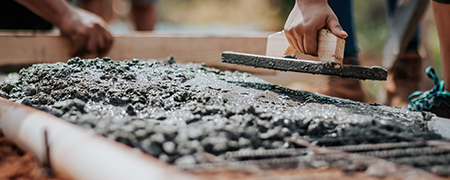Woodworking Techniques for Every DIY Concrete Works Enthusiast
Woodworking is a versatile craft that complements the skill set of concrete works enthusiasts. Whether you’re a professional in the concrete industry or a DIY enthusiast, having a solid understanding of woodworking techniques can enhance your projects and provide a unique touch to your concrete creations. In this comprehensive guide, we will explore a range of woodworking techniques suitable for every concrete works enthusiast. From basic skills to advanced methods, we’ll cover everything you need to know to incorporate woodworking into your concrete projects.
Table of Contents
- The Synergy of Woodworking and Concrete Works
- Essential Woodworking Tools for Concrete Works Enthusiasts
- Wood Selection and Preparation Techniques for Concrete Projects
- Measuring and Marking: Ensuring Precision in Woodworking for Concrete
- Cutting and Shaping Wood for Concrete Applications
- Joinery Techniques: Combining Wood and Concrete
- Finishing Touches: Woodworking Details for Concrete Projects
- Safety Measures for Woodworking and Concrete Works
- Frequently Asked Questions (FAQs)
- Conclusion
The Synergy of Woodworking and Concrete Works
Woodworking and concrete works are two complementary crafts that can come together to create stunning and functional projects. Whether you’re designing furniture pieces with concrete accents or constructing concrete countertops with wooden inlays, the combination of these materials adds a unique aesthetic and versatility to your creations. Woodworking techniques enable you to enhance the visual appeal of your concrete projects and provide practical solutions for various design challenges.
Essential Woodworking Tools for Concrete Works Enthusiasts
As a concrete works enthusiast with an interest in woodworking, it’s important to have the right tools to bring your ideas to life. Here are some essential woodworking tools that will complement your concrete projects:

- Circular saw
- Jigsaw
- Miter saw
- Router
- Chisels
- Clamps
- Tape measure
- Drill and drill bits
- Woodworking vice
- Hammer
Having these tools at your disposal will enable you to incorporate woodworking techniques seamlessly into your concrete projects and achieve professional-level results.
Wood Selection and Preparation Techniques for Concrete Projects
Choosing the right type of wood for your concrete projects is essential for both aesthetic and practical reasons. Consider the specific requirements of your project, such as the desired look, durability, and compatibility with concrete. Popular wood choices for concrete works include oak, pine, maple, and walnut. Ensure that the wood is properly prepared by planing, jointing, and sanding to create smooth and flat surfaces. Proper preparation ensures a strong bond between wood and concrete and enhances the overall quality of your project.
Measuring and Marking: Ensuring Precision in Woodworking for Concrete
Accurate measurements and precise markings are crucial when incorporating woodworking techniques into your concrete projects. Use a reliable tape measure or combination square to measure and mark your wood accurately. Remember the adage, “Measure twice, cut once.” Taking the extra time to double-check your measurements will prevent costly mistakes. When marking your wood, use a sharp pencil or marking knife to make precise marks that guide your cuts, joinery, or other woodworking techniques.
Cutting and Shaping Wood for Concrete Applications

The ability to cut and shape wood is fundamental to woodworking in the context of concrete works. Here are some essential cutting techniques to master:
- Crosscuts: Use a circular saw or miter saw to make straight cuts across the wood grain.
- Rips: A table saw is ideal for making long cuts parallel to the wood grain.
- Curves: A jigsaw allows you to cut curves and intricate shapes in wood, adding unique design elements to your concrete projects.
- Grooves: Use a router to create grooves or channels in the wood for embedding concrete elements or for decorative purposes.
Practice these cutting techniques on scrap wood before working on your actual project to gain confidence and ensure precision in your woodworking for concrete.
Joinery Techniques: Combining Wood and Concrete
Joinery techniques play a crucial role in combining wood and concrete in your projects. Consider the following techniques:
- Mortise and tenon joints: This classic woodworking joint involves a protruding tenon that fits into a corresponding mortise, creating a strong and durable connection between wood and concrete.
- Dowel joints: Use dowels to align and join wood and concrete components securely.
- Adhesive bonding: High-quality adhesives specifically designed for wood and concrete applications can create a reliable bond between the two materials.
Experiment with different joinery techniques to find the ones that best suit your concrete projects and achieve the desired visual and structural outcomes.
Finishing Touches: Woodworking Details for Concrete Projects

Adding woodworking details to your concrete projects can elevate their overall appearance and make them stand out. Consider the following finishing techniques:
- Sanding: Smooth out the wood surfaces to achieve a polished and refined look that complements the concrete elements.
- Staining: Apply wood stains to enhance the color and grain of the wood, adding depth and character to your concrete works.
- Sealants: Protect the wood from moisture and environmental factors by applying appropriate sealants, such as polyurethane or varnish.
By incorporating these woodworking details, you can achieve a harmonious blend of wood and concrete in your projects, creating visually stunning and unique pieces.
Safety Measures for Woodworking and Concrete Works
When working with wood and concrete, safety should always be a priority. Follow these essential safety measures:
- Wear appropriate safety gear, including safety glasses, gloves, ear protection, and a dust mask.
- Keep your work area clean and well-organized to minimize accidents and tripping hazards.
- Use tools and equipment according to manufacturer instructions, and ensure they are properly maintained and in good working condition.
- Take necessary precautions when handling concrete, such as wearing protective clothing and avoiding prolonged exposure to dust and wet concrete.
By prioritizing safety, you can enjoy the process of woodworking for concrete works while minimizing the risk of injuries.
Frequently Asked Questions (FAQs)
Q: How can woodworking techniques enhance my concrete projects?
A: Woodworking techniques offer unique design possibilities for concrete projects. They allow you to incorporate wood elements for added visual interest and functionality, creating a distinctive aesthetic and practical solutions.
Q: Can I use reclaimed wood for my woodworking and concrete projects?
A: Absolutely! Reclaimed wood adds character and sustainability to your projects. However, ensure that the wood is structurally sound and free from pests or rot before incorporating it into your concrete works.
Q: Are there any specific considerations when working with wood and concrete together?
A: Yes, one important consideration is the expansion and contraction of wood and concrete due to temperature and moisture changes. Allow for proper gaps and use appropriate sealants to accommodate these movements.
Q: Can woodworking techniques be used for outdoor concrete projects?
A: Yes, woodworking techniques can be used in outdoor concrete projects. However, it’s important to select wood species that are suitable for outdoor use and apply appropriate weather-resistant finishes and sealants.
Q: Where can I learn more about advanced woodworking techniques for concrete works?
A: Consider attending workshops or classes specifically focused on woodworking for concrete projects. Online resources, books, and forums dedicated to woodworking and concrete works can also provide valuable insights and inspiration.
Conclusion
By incorporating woodworking techniques into your concrete projects, you can unlock a world of creativity and craftsmanship. The combination of wood and concrete offers endless design possibilities, from furniture pieces with concrete accents to stunning concrete countertops with wooden inlays. Remember to prioritize safety, invest in quality tools, and continuously expand your knowledge through practice and exploration. Embrace the synergy of woodworking and concrete works, and let your imagination shape unique and remarkable creations.




